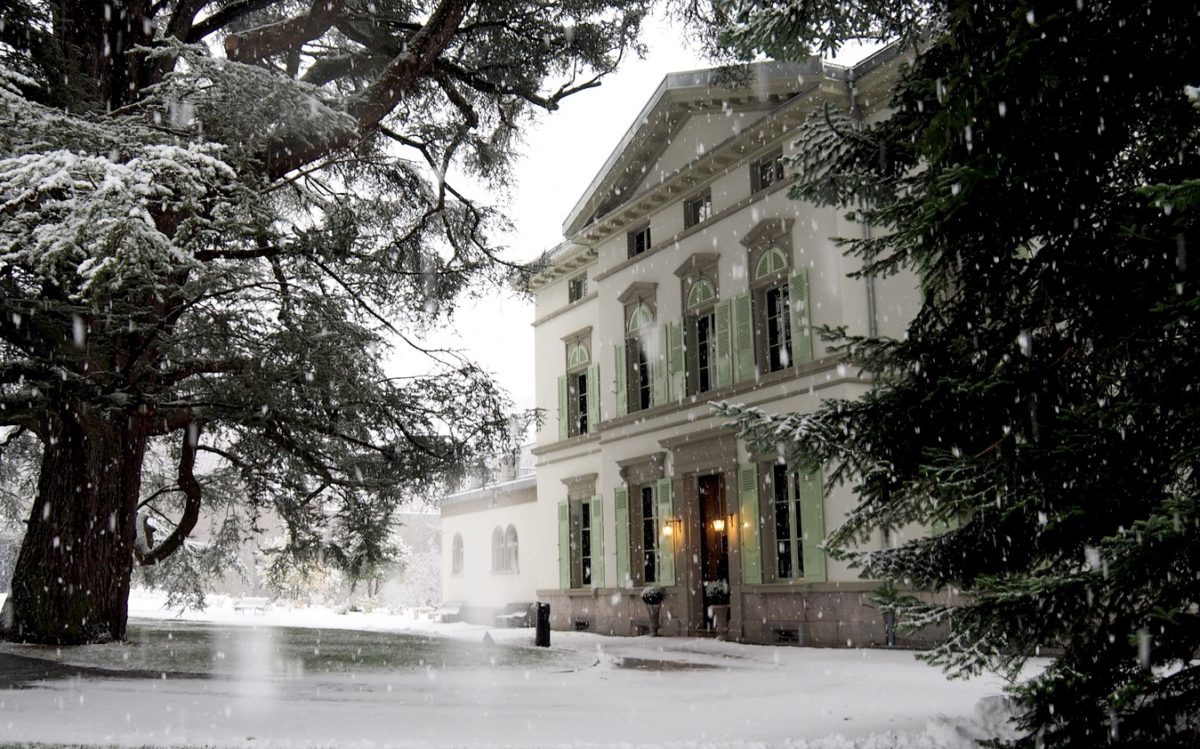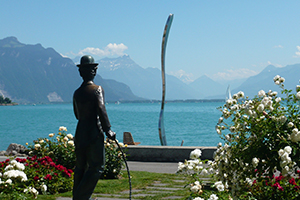
Chaplin’s World. Credit: Chaplin’s World Bubbles Incorporated
American film icon Charlie Chaplin lived his last 26 years, not as a movie star, but as a castaway without a country, finding solace in a home perched above Lake Geneva, Switzerland. His estate is being turned into a museum, and Chaplin’s World, scheduled to open this spring, aims to honor the professional and personal life of one of the world’s most beloved figures. We toured the construction site late last year to get a first-hand look.
Born in England, Chaplin came to the United States in 1911. You know the basic story from there: Chaplin became the biggest movie star in the world, and his Little Tramp character morphed into one of the most iconic fictional characters in history. Chaplin was a pioneer filmmaker and storyteller, too. Many of the creative story devices (facial expression to convey emotion, long shots) he conceived are still used in films today.
But when his U.S. citizenship was revoked during the Army-McCarthy hearings in 1954, he relocated to Vevey (an hour outside of Geneva). Built in 1840, Chaplin’s Manoir le Ban sits on 35 acres. Originally, it was, more or less, a pig farm. Chaplin bought the estate from an American diplomat and succeeded in living a not-so-quiet life, entertaining guests and frequently visiting nearby Montreux impeccably dressed and showing off. The Manoir consisted of a main house, barn, garage and living quarters for Chaplin’s dozen servants, as well as a swimming pool and tennis court.

Chaplin Statue Overlooking Lake Geneva and the Alps, Photo Courtesy of Chaplin’s World
As part of Chaplin’s World, a joint project between Chaplin’s estate and private investors, the house, barn and servants quarters are being completely remodeled. What was once the garage and servants quarters will be business offices. The old barn will house a restaurant tentatively called The Limelight and gift shop.
Chaplin’s residence (library, office and bedrooms) is being transformed into a formal dedication to the man’s personal life. The main house will contain memorabilia from his estate, such as items from the aforementioned hearings and his dalliances with young girls. You will be able to go inside Chaplin’s bedroom, his office, library and to the top of the house, which was the children’s area (Chaplin and wife, Oona, had eight children living at the Manoir).
An entirely new building is also under construction. The cavernous, two-story structure will feature different aspects of Chaplin’s film life, including a walk down a main street from Chaplin’s Tramp days. Full-screen and multimedia images of Chaplin’s films, and 20 life-sized wax caricatures of movie stars from the 1920s, 30s and 40s will ornament the place. There are 200,000 archived items, most notably 15,000 photographs. Of course, new Little Tramp merchandise and branding will be a part of the finished production. Organizers anticipate 300,000 visitors annually.
This is an ambitious project at a cost of more than $50 million, according to Yves Durand, vice president of the Chaplin Museum and our tour guide of the construction site. “We feel a responsibility to do this correctly, to be the nicest museum in Switzerland,” he says.
The grounds are being completely redone, too, adding a much-needed parking lot (Chaplin’s old garden) and converting the decrepit landscaping to its former glory. Staying in place are several mature pine and cedar trees, including one Durand says was a favorite of pop star Michael Jackson who, along with luminaries like Albert Einstein, visited Manoir Le Ban. Chaplin’s tennis court and swimming pool are gone but the stunning views of Lake Geneva and the Alps remain — as will the memory of a man who forever transformed the film industry once these doors officially open to the public.
